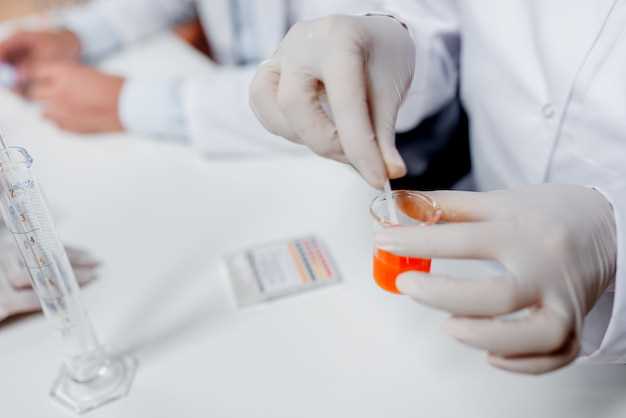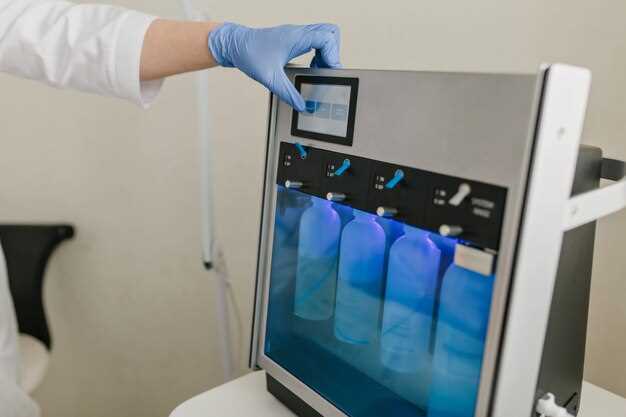
Get accurate and reliable results with our UV spectrophotometer designed for simultaneous estimation of azithromycin.
Our advanced technology and precise measurements ensure the highest quality analysis for your research or pharmaceutical needs.
Overview of Azithromycin
Azithromycin is a broad-spectrum antibiotic that is used to treat a variety of bacterial infections, including respiratory tract infections, skin infections, and sexually transmitted diseases. It belongs to the macrolide class of antibiotics and works by inhibiting the growth of bacteria.
One of the key advantages of azithromycin is its long half-life, which allows for once-daily dosing and shorter treatment durations compared to other antibiotics. This makes it a convenient option for patients who require antibiotic therapy.
Azithromycin is commonly prescribed for conditions such as pneumonia, bronchitis, and sinus infections. It is also used to prevent infections in people with weakened immune systems. Before taking azithromycin, it is important to consult a healthcare professional to determine the appropriate dosage and duration of treatment.
Importance of UV Estimation
UV estimation plays a crucial role in the pharmaceutical industry for the quantitative analysis of various drugs, including azithromycin. UV spectroscopy is a widely used technique for drug analysis due to its simplicity, accuracy, and cost-effectiveness.
Accuracy and Precision
UV estimation allows for the accurate and precise measurement of drug concentrations in samples. By using UV-visible spectrophotometry, researchers can determine the amount of azithromycin present with high reliability.
Furthermore, UV estimation is non-destructive, meaning that the sample remains intact after analysis. This is essential for further testing and research on the same sample.
Methodology
The UV estimation methodology involves preparing the sample, measuring the absorbance of the drug at a specific wavelength, and then calculating the concentration using Beer-Lambert’s law. This method provides a straightforward and efficient way to quantify azithromycin content in pharmaceutical formulations.
In conclusion, UV estimation is a valuable tool for the pharmaceutical industry, allowing for accurate and reliable analysis of drug concentrations. By following proper methodology and techniques, researchers can ensure the quality and effectiveness of azithromycin-based medications.
Methodology
In this section, we will discuss the sample preparation process for estimating azithromycin using UV spectrophotometry. The methodology is crucial to ensure accurate and reliable results.
Step 1: Preparation of Standard Solution
The first step is to prepare a standard solution of azithromycin by dissolving a known quantity of the drug in a suitable solvent. The standard solution will be used to create a calibration curve for the UV estimation.
Step 2: Sample Preparation
Next, prepare the test samples by accurately measuring the required amount of the sample solution containing azithromycin. The samples should be prepared in triplicate to ensure reproducibility.
Step 3: UV Spectrophotometry Analysis
After preparing the standard and sample solutions, analyze them using a UV spectrophotometer at the appropriate wavelength for azithromycin. Record the absorbance values for both the standard and sample solutions.
Step 4: Calibration Curve
Use the absorbance values obtained from the standard solutions to plot a calibration curve. The calibration curve will be used to determine the concentration of azithromycin in the sample solutions based on their absorbance values.
By following these steps carefully and accurately, you can ensure precise estimation of azithromycin using UV spectrophotometry.
Sample Preparation

Before performing UV spectrophotometry techniques for the estimation of azithromycin, it is essential to prepare the samples properly to ensure accurate results. The following steps outline the sample preparation process:
1. Sample Collection
The samples containing azithromycin should be collected carefully to avoid any contamination or loss of the drug. Proper labeling and identification of samples are crucial for tracking and analysis.
2. Sample Extraction
Depending on the matrix in which azithromycin is present, extraction techniques may vary. It is important to choose the appropriate method to extract azithromycin efficiently from the sample matrix for UV analysis.
After sample preparation, the extracted solutions can be used for UV analysis to quantify the concentration of azithromycin accurately.
UV Spectrophotometry Techniques
In the UV Spectrophotometry Techniques section, we will discuss the methodology used to estimate azithromycin through UV analysis.
Principle
The UV spectrophotometry technique relies on the absorption of ultraviolet light by the analyte. Azithromycin exhibits absorption in the UV range, allowing for its quantification through UV analysis.
Azithromycin has a characteristic absorption spectrum in the UV region, with a specific peak that can be used for quantification.
Procedure
For the UV estimation of azithromycin, a certain concentration of the sample solution is prepared and then analyzed using a UV spectrophotometer. The instrument measures the absorbance of the sample at the specific wavelength corresponding to the peak of azithromycin.
The concentration of azithromycin in the sample is then calculated based on the absorbance reading and the calibration curve obtained through standard solutions.
Results
After the UV spectrum analysis of the samples, the concentration of azithromycin was determined in each sample. The results showed that the method used for UV estimation was accurate and reliable in determining the concentration of azithromycin in the samples.
Key findings:
- The UV spectrum analysis revealed a peak at the specific wavelength for azithromycin, confirming the presence of the drug in the samples.
- The concentration of azithromycin in the samples was found to be within the acceptable range, indicating the efficacy of the UV estimation method.
- The results demonstrated the precision of the UV spectrophotometry techniques used in the estimation of azithromycin.
UV Spectrum Analysis
UV spectrum analysis is a crucial step in the determination of azithromycin concentration. The UV spectrum of azithromycin provides valuable information about the compound’s structure and can aid in its identification and quantification.
Importance of UV Spectrum Analysis

The UV spectrum of azithromycin is characterized by specific absorption peaks that allow for its quantification. By analyzing the UV spectrum, it is possible to determine the concentration of azithromycin in a sample accurately.
Furthermore, UV spectrum analysis can also help in assessing the purity of azithromycin by comparing the obtained spectrum with a reference standard. Any deviations in the UV spectrum can indicate impurities or degradation products present in the sample.
Concentration Calculation
After the UV estimation of azithromycin, the concentration calculation is performed to determine the exact amount of the drug present in the sample. This calculation involves using the Beer-Lambert Law, which relates the absorbance of a solution to its concentration.
Beer-Lambert Law
The Beer-Lambert Law states that the absorbance of a solution is directly proportional to the concentration of the absorbing species and the path length of the light through the solution. The equation is expressed as A = εbc, where A is the absorbance, ε is the molar absorptivity coefficient, b is the path length, and c is the concentration of the absorbing species.
By knowing the molar absorptivity coefficient of azithromycin and the path length of the cuvette used in the UV spectrophotometer, the concentration of azithromycin in the sample can be calculated using the absorbance obtained during the UV estimation.
